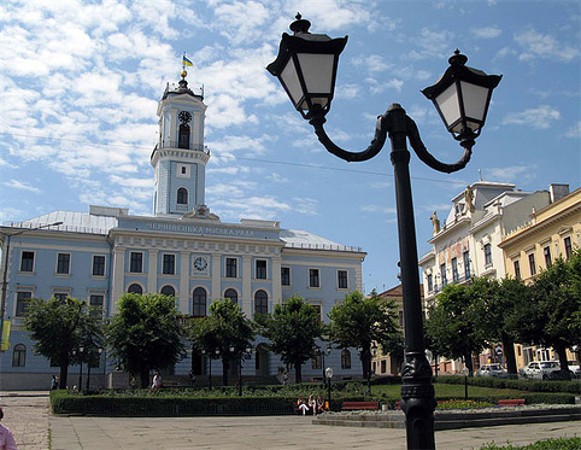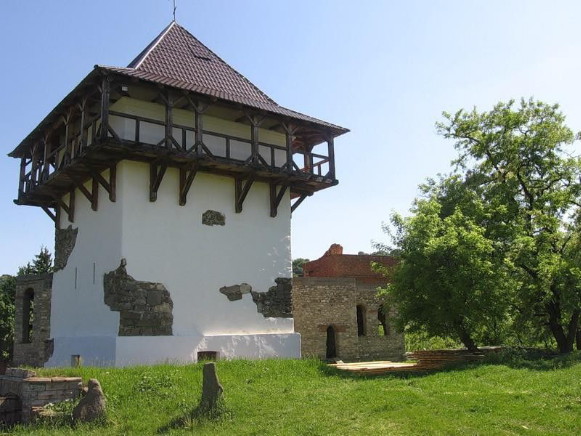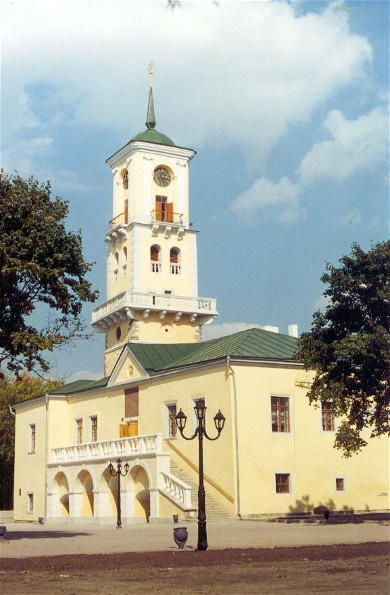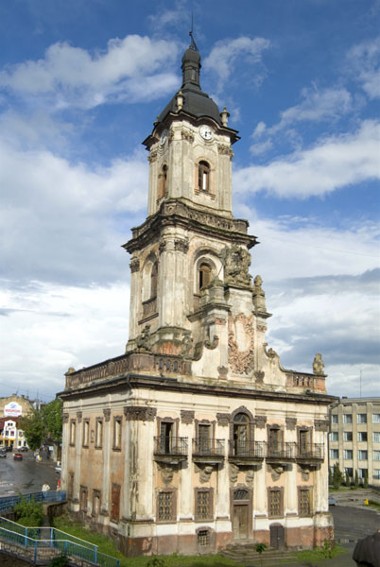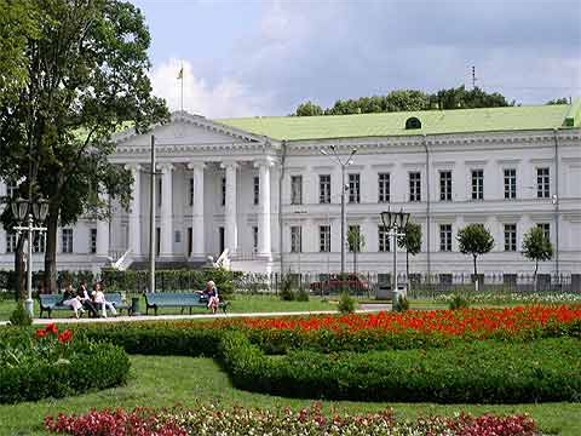Ratusha
Ratusha or ratush [ратуша or ратуш]. Derived from the German Rathaus (city hall), the terms were used in Ukraine to denote both a certain type of municipal government and the city hall building. From the 14th to 17th centuries towns in Ukraine that did not have the rights of Magdeburg law were called ratushni and were governed by a viit and one or two burmistry (see Burmister). Those officials were not independent, but were responsible to the local lord or the local representative of the state, such as the starosta.
Ratusha or ratush also denoted the building of the municipal government, which usually had one tall tower and stood at the center of the town or city. Such buildings first appeared in Ukraine in the 14th century. The oldest architectural monuments of the kind in Ukraine are in Staryi Sambir (1668), Buchach (1751), and Kamianets-Podilskyi (1754). Kharkiv, Poltava, Lviv, and Chernivtsi have some fine examples of 19th-century city halls.
[This article originally appeared in the Encyclopedia of Ukraine, vol. 4 (1993).]
